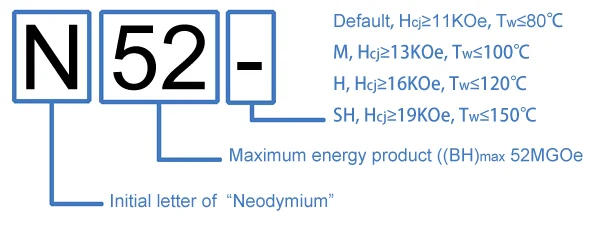Neodymium Magnet Grades: All You Need to Know
What is Neodymium Magnet Grade?
When shopping for neodymium magnets, you may notice numbers and letters like "N35," "N52," or "N42H." These combinations represent a magnet's "grade," a critical factor in understanding the magnet's strength, temperature tolerance, and suitability for various applications. Knowing what neodymium magnet grades mean can help you make informed choices for your projects.
1. Understanding the Number in Neodymium Magnet Grades
The number in a grade, such as the "35" in "N35," generally indicates the magnetic strength of the neodymium magnet. This number represents the magnet's maximum energy product, measured in Mega Gauss Oersteds (MGOe). Higher numbers typically mean stronger magnets. For example:
- N35: Strong, commonly used in various applications.
- N52: The strongest neodymium grade available, suitable for high-performance applications.

2. The Letter in Neodymium Magnet Grades: Temperature Resistance
Beyond magnetic strength, the letter in a neodymium grade tells us about the magnet's maximum operating temperature. Neodymium magnets can lose magnetic strength at high temperatures, so temperature ratings are crucial for specific industrial uses.
Here's what the letters signify:
- N: Standard operating temperature, up to 80°C (176°F).
- M: Medium temperature resistance, up to 100°C (212°F).
- H: Higher temperature resistance, up to 120°C (248°F).
- SH: Super high temperature resistance, up to 150°C (302°F).
- UH: Ultra-high temperature resistance, up to 180°C (356°F).
- EH: Extremely high temperature resistance, up to 200°C (392°F).

Each letter grade helps determine if the magnet can withstand the operating environment without losing strength.
3. Why Neodymium Magnet Grades Matter
Choosing the right grade ensures that the magnet functions optimally for your application. For example, an N52 magnet is ideal for applications requiring maximum strength in small spaces, while an N42SH magnet is better suited for high-temperature environments. By understanding these grades, you can avoid issues like magnet degradation or loss of strength, especially under challenging conditions.
Contact our expertise to discuss your project and needs:
E: sales@core-magnets.com
